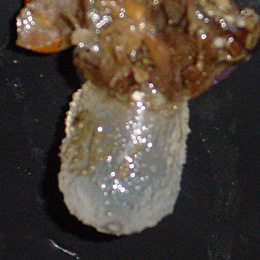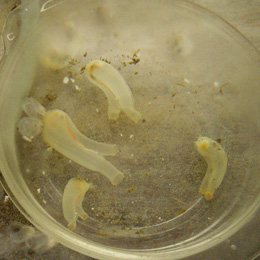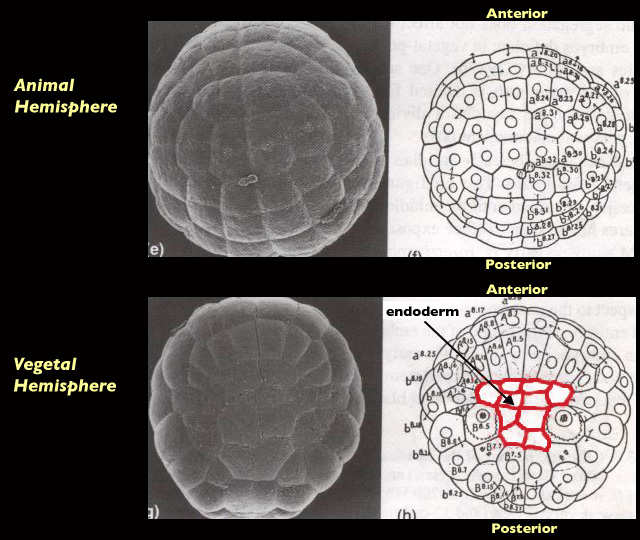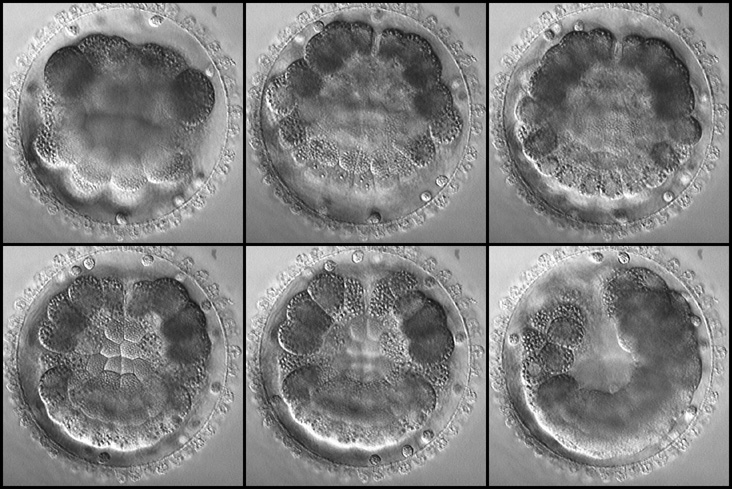Team Squirt (left to right): James Lee, Ryan Gile, Kristin Sherrard (TA), Maria-Jose Bravo, Tammie Robinson

For the past five weeks, our team has worked closely with ascidian embryos. Our main focus of study was the process by which endoderm cells invaginate during gastrulation. Not much is known about the mechanics of how a sheet of endoderm cells in an ascidian embryo invaginates. One can imagine that there must be forces generated by the individual endoderm cells that must drive the process. Our goal was to gain insight about possible properties and behaviors that endoderm cells might posses that would drive an invagination. Then we wanted to incorporate some of the observed characteristics into a computer model of a sheet of endoderm cells. This sheet would hopefully exhibit the global pattern of invagination as a consequence of the local interactions and properties of individual endoderm cells.
Early in the project, we hoped to work with three different species of ascidian: Boltenia villosa, Corella inflata, and Ciona intestinalis:
 |
 |
 |
Boltenia villosa |
Corella inflata |
Ciona intestinalis |
Boltenia villosa was a good choice for us to work with because it is known to be reproductive year-round in Friday Harbor, and the instructors had extensive experience working with this species and have refined certain useful experimental techniques for this species. Corella inflata is of interest due to the superior clarity of the embryonic cells. Clearer time-lapse movies are possible with Corella. Ciona savignyi was of interest due to its ability to develop normally at room temperatures. However, Boltenia quickly became the principal species of study because there was not enough time to adapt the protocols for fertilizing and dechorionating Corella or Ciona.
One benefit of working with ascidians is that cell fate specification occurs early in development. For example, the entire endoderm line of cells is derived from only 10 precursor cells beginning at the 64 cell stage embryo (see images below). This makes tracking the endoderm through invagination extremely convenient. In addition, micromanipulation is easier with fewer cells; in contrast, in many other animals the primordial tissues may consist of hundreds of cells.
There are two distinct hemispheres of the ascidian embryo, the animal and vegetal hemispheres. Animal hemisphere contains the ectoderm cells. These cells will go on to form the tunic or skin of the adult ascidian. The vegetal hemisphere contains the endoderm cells which go on to form the gut. The notochord and muscle precursor cells can also be found on the vegetal hemisphere.


A fixed Boltenia embryo stained with phalloidin at the 110 cell stage. Cells fated to form major tissue types are labeled in half the embryo: E=endoderm, N=notochord, NP=neural plate, M=muscle. Anterior is to the left and posterior to the right. Click the picture to see the higher-resolution original.
The endoderm is derived from epithelial cells of the early embryo. They are found on the vegetal surface of the blastula before gastrulation. When gastrulation begins, the cells dive in ("invaginate") towards the interior of the embryo. This process begins at the 110-cell stage. Once the sheet of endoderm cells has descended, they continue to divide. The endoderm cells will ultimately form the gut or digestive tract of the animal.

Frames from a time-lapse movie (courtesy of George von Dassow) showing endoderm invagination in Boltenia. This embryo's vegetal pole is toward the viewer, posterior is up and anterior is down. This movie is available in three sizes. The movies will open in a new window sized as indicated. View the small version of the movie [400x510 pixels, 970 KB], or a larger version [520x580 pixels, 3.8 MB], or the full-frame version [700x730 pixels, 14.4 MB].
Invagination is a dynamic process by which the endoderm cells undergo a complete change in conformation to drive or accommodate invagination of the entire sheet. The mechanical forces behind the process are not known. It is this fundamental problem that we have involved ourselves during our project. The endoderm cells must be generating forces to cause the collective sheet to invaginate. Many possible ideas have been suggested to describe mechanistically how the sheet of cells invaginates, and our task was to explore what is actually happening in these cells through experiments and observations.